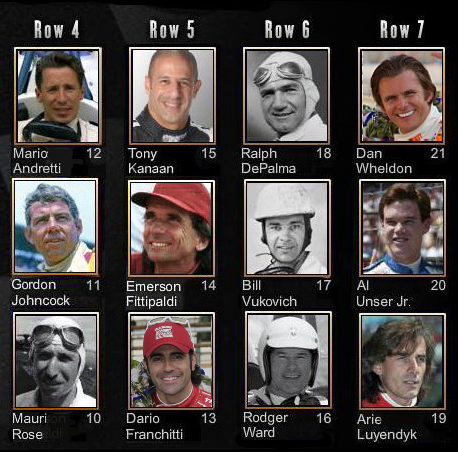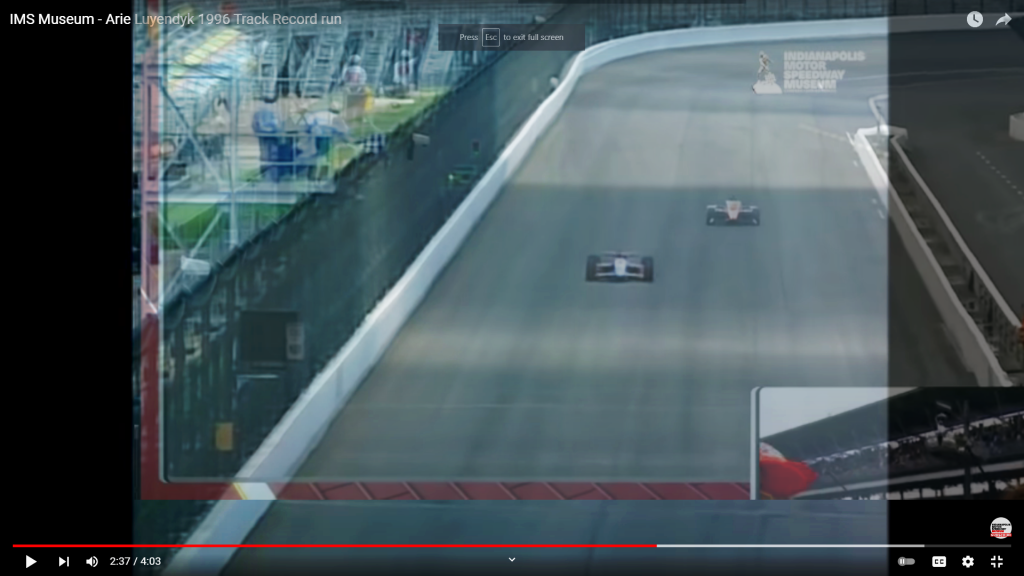
Back again and it’s over a week dealing with the post-Indy 500 withdrawal that befalls us annually. Perhaps the feeling is also abetted by the renewal of my tickets for 2023, which reminds me that the next Indy 500 is 350-some-odd days away.
To ease my pain, I return to the numbing coolness of bland columns and rows of race statistics, including the annual update to my Greatest 33 and some other noted bits from this year’s race.
The Greatest 33 – As a refresher, IMS put out this list in 2011 and fans could vote on their Greatest 33 to race in the Indy 500. To help me choose my candidates, I used a select batch of statistics to make my choices then and since have maintained this list every year, updating following the 500. The selected stats are weighted based on my relative value in an overall score by driver. My categories are; Races Started (10 pts. each), Pole Positions (20 pts. each), Laps Lead (1 pt. each), Races Won (250 pts. each), and Top 5 finishes (40 pts. each). I have been considering for some years adding a category for Total Miles Completed and updating the entire list as well, more on that another time. At any rate, here it is in all it’s unabashed boringness:

In addition to all the active drivers gaining another 10 points for another race started, Scott Dixon moved up three positions via another pole and increased his laps lead total by 95 this year to surpass Ralph DePalma (612) and Al Unser (644) to become the all-time leader of laps lead of the Indy 500 (to date) with 665. I’m fairly certain he’d preferred a win with no pole and only one lap lead this year to this year’s result, but alas, it wasn’t to be once again for the Iceman whose disappointment in not winning this race in a month he dominated may also have set a new high. The utter pain on his face after the race was easily seen and we all could empathize. As it stands, Dixon remains the highest scoring single-winner on my Greatest 33.
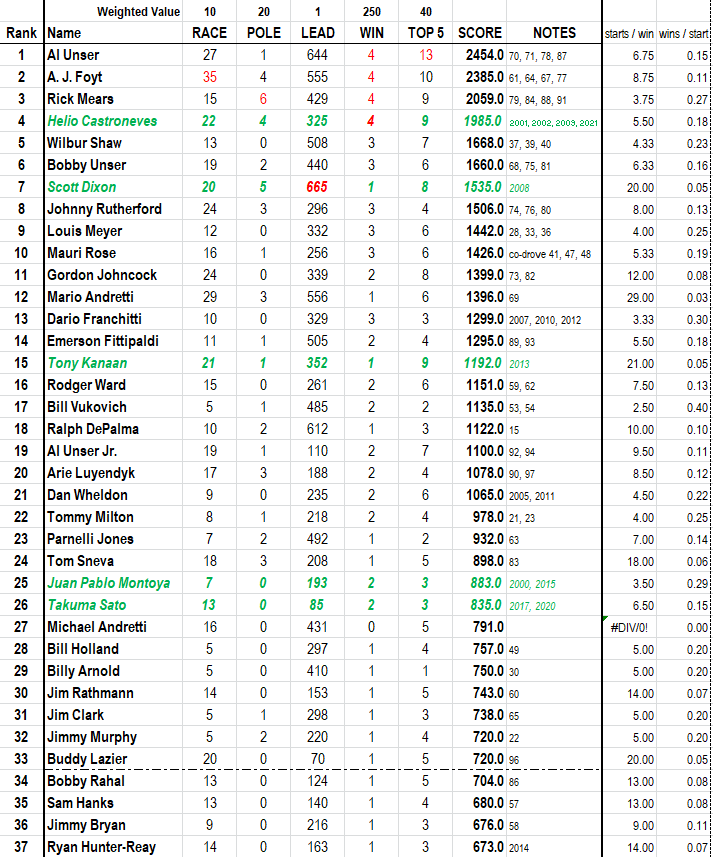
Who’s Next? – Active drivers from this year’s race that are the closest to moving into the Greatest 33 would be Power (664), Pagenaud (629), Rossi (557), Marco (534), or Ed Carpenter (516). The current driver ‘on the bubble’ is Jim Clark with 738 points and a win by the aforementioned drivers (minimally adds 301 points if leading only 1 lap) would put them well ahead of Clark on points, moving into a place amid Montoya, Sato, Sneva, and Parnelli Jones somewhere in the 8th or 9th rows.
If you recall, my list is essentially a top 30 plus the 3 best to never win it, in an homage to the Indianapolis Press Club Foundation Last Row Party. Michael Andretti, Ted Horn, and Rex Mays currently occupy Row 11, placing Clark on the ’30th place bubble’.
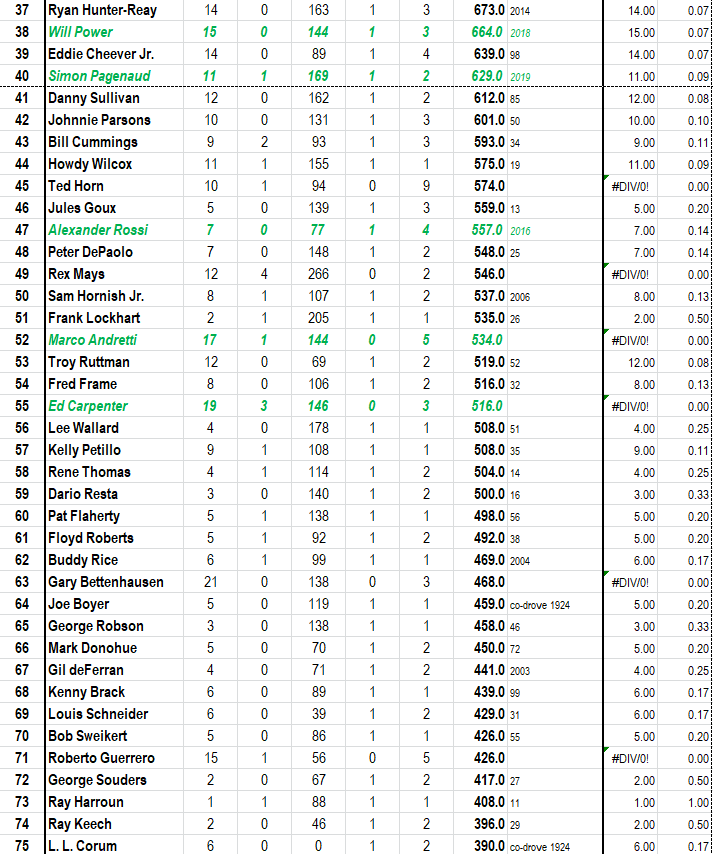
Winner, Winner – The checkers fell to the newest first-time, and second native Swedish winner in Indy 500 history – Marcus Ericsson. My Greatest 33 list contains all multiple winners of the Indy 500 and being a one-time winner with relatively few races or laps lead means Marcus jumped from 127th to 81st now totaling 343 points (and one notch ahead of Graham Hill), but is still trailing the mid-pack of all Indy 500 winners in my list. Certainly a win is a huge bump up the list, but one-time winners in the Top 33 are few and distinguished.
Top 5 finishes for Ericsson, O’Ward, Kanaan, Rosenqvist, and Rossi all boosted their standings. Kanaan especially gained as he was able to distinguish himself sufficiently from Bill Vukovich and Rodger Ward placing squarely in 15th.
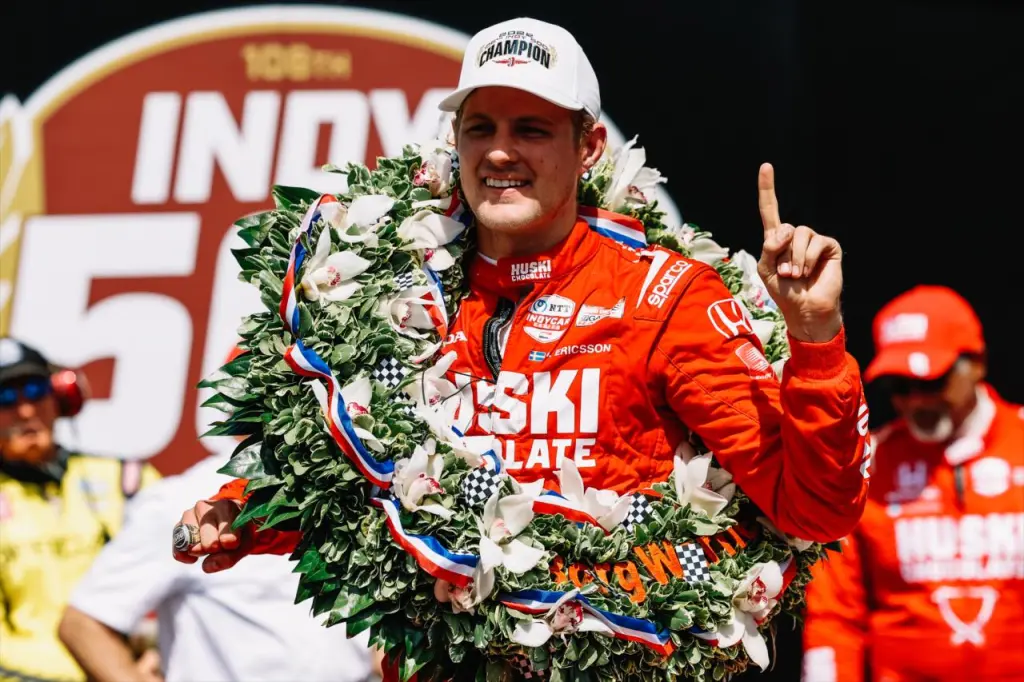
Not Bad For A Pay Driver – Marcus becomes the second native of Sweden to win the 500 (Kenny Brack in 1999 being the first). As noted above, his place among 1-time winners is fairly low trailing all others but Graham Hill, Floyd Davis (a co-driver credited with a win), and Gaston Chevrolet (the lowest ranked winner with 324 points).
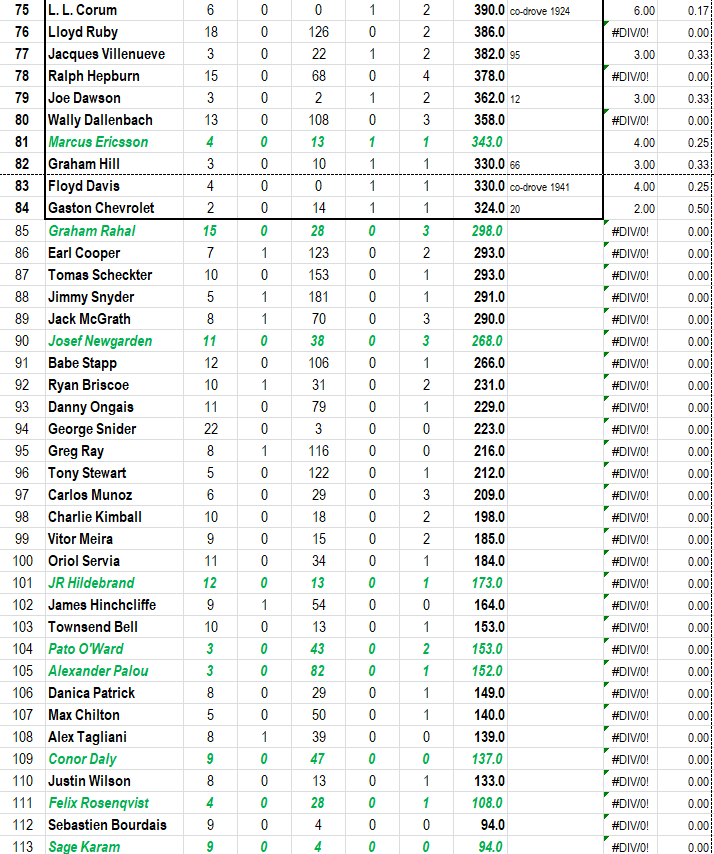
Miscellany – “Ground Control to Major Correction, come in Correction!” Somehow, in the hoary, early days of this spreadsheet, I lost Joe Dawson. For the life of me I can’t comprehend why, but somewhere in 2013, the 1912 winner disappeared from my list. Mr. Dawson was not in my Greatest 33, however to be missing him entirely was certainly an error. He returns to the grid in 79th with his 362 points, placing him between Ralph Hepburn and Wally Dallenbach, and two spaces ahead of this year’s winner Ericsson.
Miscellany 2 – One thing I miss most about the new scoring pylon versus the old one is the average race speed shown at the top of the stack. The Indy 500 qualifying field was the fastest average in history so it stands to reason that the 2022 race would be among the fastest as well. It was the 7th fastest race of all time, but it also had 31 laps of yellow, the second most compared to the 13 fastest races run (all under 3 hours running time). Only 1991 had more laps of yellow (35). 1991 stands as the 5th fastest all-time, and just a blink under 1 minute faster than 2022. Not coincidentally, the fastest race of all-time in 2013 had the fewest laps under yellow.
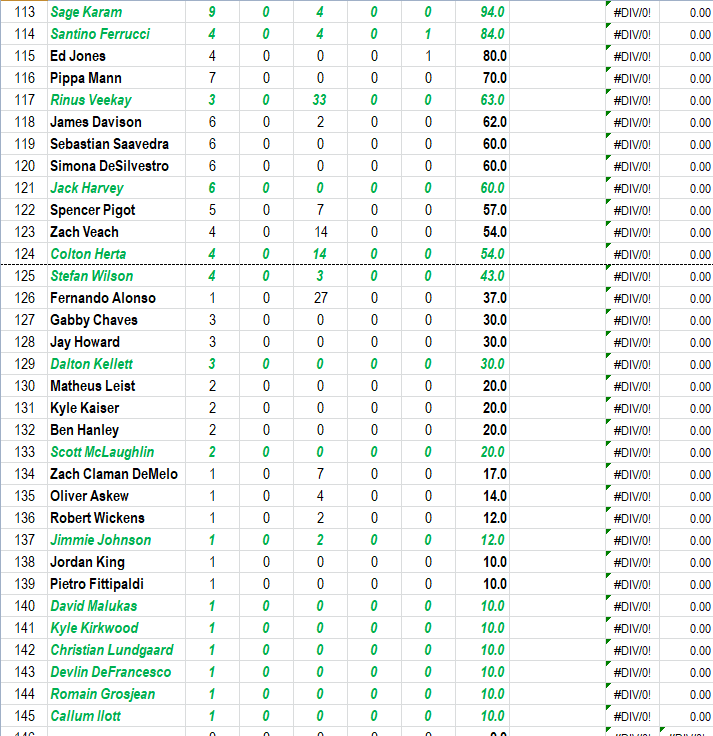

Wither TK? – Fan-favored Antoine Rizkallah Kanaan Filho, currently in 15th with 1192 points is a relatively scant 108 points away from moving up two places, passing fellow Brazilian Emo Fittipaldi, and former teammate/best bud Dario Franchitti who sit at 13th and 14th places with 1295 and 1299 respectively.
That move would align him right behind the great Mario Andretti (1396) for 13th overall. Another race and a Top 5 would seal a minimum of 50 points, not to mention what a win or leading 50 more laps would do. Although he’s on his second “Last Lap” of the Indycar scene, he did little the entire month to dissuade a smart owner from putting the popular driver in a highly-competitive second/third seat for Indy should the funding be there. Every driver stops racing at some point, and there’s much to be said for going out on a high, but I can’t shake the feeling that we’ve not seen the last of TK at Indy.
The drivers in the Greatest 33 change very little, although this generation of legendary Indycar drivers continue to march steadily up the list.
Dixon’s disappointing day should also be assuaged in the fact that he now owns a very impressive record at IMS – The Most Laps Lead of all-time. For now, it will always come with the caveat that he also hold only one win. If Dixon manages to grab that second win and maybe one more pole (tying Rick Mears for Most Pole Positions) before he’s done, the records will mean even more in combination with multiple wins, and cementing his place among the greatest of the Greatest 33 to race at Indy.

